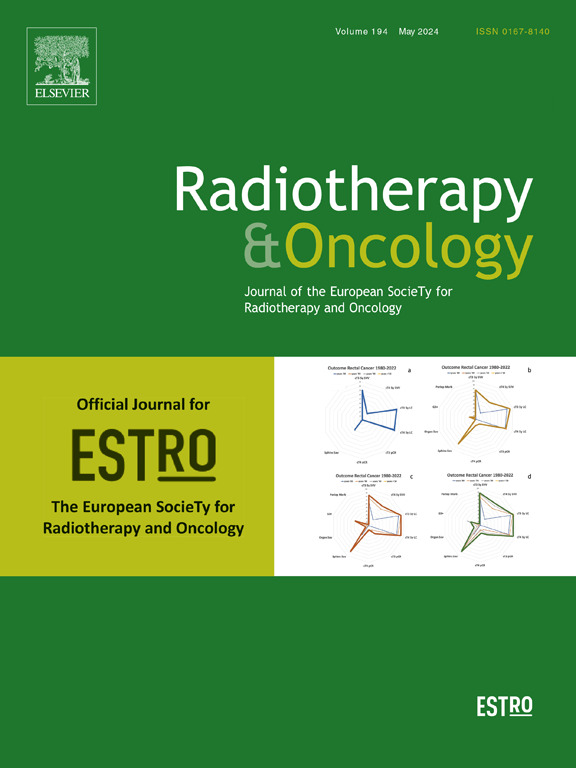Determining the optimal radiation dose for locally advanced esophageal cancer: A pooled analysis of reconstructed individual patient data from randomized clinical trials
IF 4.9
1区 医学
Q1 ONCOLOGY
引用次数: 0
Abstract
Background
The optimal radiation dose of definitive concurrent chemoradiotherapy (dCCRT) for esophageal cancer (EC) has always been a concern in radiation oncology and has remained controversial for several decades, we performed a meta-analysis based on individual patient data (IPD) to explore the optimal dose.
Methods
Randomized clinical trials (RCTs) comparing high-dose radiotherapy (HD-RT,≥59.4 Gy) with standard-dose radiotherapy (SD-RT, 50 Gy/50.4 Gy) were identified. Graphical reconstructive algorithms were employed to extract time-to-event outcomes from Kaplan-Meier curves presented in the original RCTs. Using reconstructed individual patient data, summary overall survival (OS), progression-free survival (PFS) and locoregional progression-free survival (LRPFS) for HD-RT versus SD-RT were recalculated. Hazard Ratios (HRs) of OS, PFS and LRPFS reported were also pooled by the fixed or random effects model.
Results
Six RCTs, including 1722 patients, were included. IPD for OS, PFS, and LRPFS were from 1287, 462, and 722 patients, respectively. Overall, HD-RT had no significant benefits in 3-year OS (RR = 1.00, P = 0.990), 3-year progression-free survival (PFS) (RR = 0.96, P = 0.320) and 3-year locoregional progression-free survival (LRPFS) (RR = 0.88, P = 0.204), compared with SD-RT. Consistent with above results, the pooled HRs of OS, PFS and LRPFS for HD-RT versus SD-RT were 0.99 (P = 0.854), 0.94 (P = 0.628) and 0.91 (P = 0.410), respectively. However, HD-RT had higher grade ≥ 3 treatment-related adverse effects (TRAEs) (OR = 1.26, P = 0.025). Subgroup analyses were also performed based on the RT techniques, histology, size of the RT target, dose-escalation mode, and stage editions. We found that dose escalation, even in subgroups, did not benefit long-term survival but resulted in a higher incidence of grade ≥ 3 TRAEs.
Conclusion
The results provide robust evidence that corroborates current guidelines and supports the clinical practice of employing SD-RT. Additionally, it provides implications for the feasibility of further research into novel drug combinations (e.g., immunotherapy) rather than radiation dose escalation.
求助全文
约1分钟内获得全文
求助全文
来源期刊

Radiotherapy and Oncology
医学-核医学
CiteScore
10.30
自引率
10.50%
发文量
2445
审稿时长
45 days
期刊介绍:
Radiotherapy and Oncology publishes papers describing original research as well as review articles. It covers areas of interest relating to radiation oncology. This includes: clinical radiotherapy, combined modality treatment, translational studies, epidemiological outcomes, imaging, dosimetry, and radiation therapy planning, experimental work in radiobiology, chemobiology, hyperthermia and tumour biology, as well as data science in radiation oncology and physics aspects relevant to oncology.Papers on more general aspects of interest to the radiation oncologist including chemotherapy, surgery and immunology are also published.
 求助内容:
求助内容: 应助结果提醒方式:
应助结果提醒方式:


